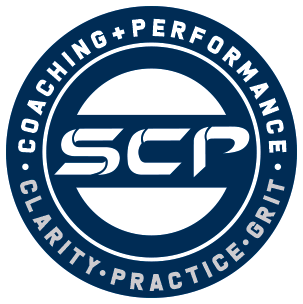Enabling clarity
Seeing clearly. It’s a good place to start and yet as leaders, we often overlook this critical first step for ourselves and for our teams. We have a seemingly productive project kick off or status meeting and yet results don’t materialize. How could the team miss the mark when we talked at length about what we were trying to achieve? Maybe it was the timing, maybe it was the budget, maybe the team wasn’t the best combination of talent? And maybe that team of all-stars didn’t have the same picture of success from the outset.
Given all the variables that any leader of people has to contend with, clarity is often the biggest barrier that we face when trying to get our teams to operate at their most optimal level. Without clarity, we find ourselves stuck.
Leadership happens in the grey. Decisions aren't black and white. For many leaders, answers to the questions they face aren't simply yes or no. For many leaders, multiple things can be true at the same time, especially when consistently balancing people and performance. To see their way through complex situations, leaders must often prioritize what's important and help their teams see the priority too.
Recently, an executive client was wrestling with having to 'parent' his team because they didn't seem to be 'bought in'. He was often pointing out missed details because they were going unnoticed by the team, but more importantly, the misses were catching the attention of senior leaders. The team seemed to have a different sense of urgency or awareness of details that mattered. This lack of 'buy in' or commitment was fuelling a narrative of subpar operations that ran counter to our executive's standards and vision of excellence. Our client was frustrated having to give direction on every little thing.
Through a series of coaching conversations and simple yet challenging questions, we helped our client connect his frustration with what seemed like a commitment issue, to a bigger challenge around clarity. With clarity on the vision of excellence and how their actions contributed to that narrative, instead of micro-managing his team, they could all rally around shared processes and observable behaviours with a matched sense of urgency, attention and commitment to excellence.
Some of our go-to questions to reveal clarity?
To help prioritize and focus:
What's the problem we're trying to solve?
What does success look like?
To help uncover skill gaps, needs and observable behaviours:
How will we get there together?
To help clarify KPIs, values and non-negotiables:
Why is it important to get there?
How do we want to win/lose the game?
SCP Coaches work with leaders to help them define and practice clarity for themselves and their teams so that they can harness the powerful role of a coach’s vision. Just as an athletic coach on the sideline has a different perspective than the player in the game, a leader as coach typically has a different vantage point than their team. Being able to effectively communicate what they see, where they want the team to go, and offer guidance as to why one course of action over another is ideal is essential in-game for a sideline coach. The average leader as coach isn’t faced with the pressure of minute-to-minute in-game adjustments, though sometimes it might feel that way. Still, the leader as coach needs to ensure that their team has a clear understanding of the team or organization’s common vision, the expectations for realizing that vision, and most importantly, why and how their team’s contribution matters to that vision becoming reality.
It’s an essential formula that we focus on with leaders so that they can focus on people and performance, results and growth. The formula is critical in supporting leaders to get unstuck and it starts with getting clear - clear vision, clear communication, clear expectations, clear context, clear success metrics.
Get inspired by Third Factor’s 3 Plays and 4 Skills of Exceptional Coaches.
“Vision is the ability to talk about the future with such clarity it is as if we are talking about the past”
